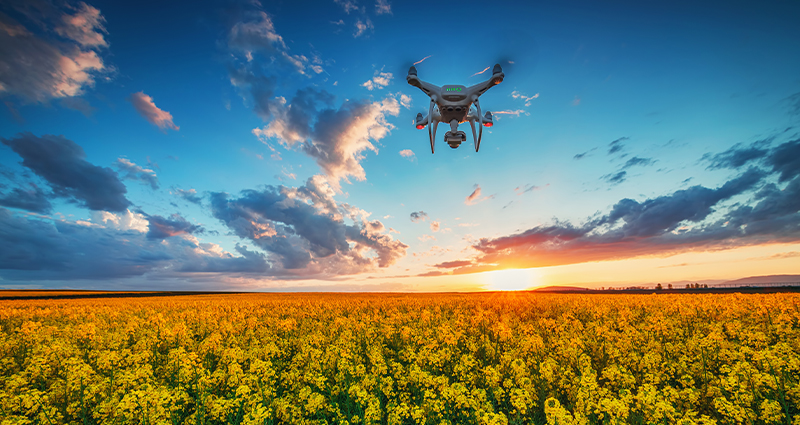Part 108: The Next Step in BVLOS Integration and Drone Innovation

As the drone industry awaits the Federal Aviation Administration’s (FAA) forthcoming Part 108 regulations, the landscape of Beyond Visual Line of Sight (BVLOS) operations stands on the brink of transformation. These anticipated rules aim to standardize BVLOS flights, enabling more complex and expansive drone missions across various sectors.
Understanding Part 108
Part 108 is set to establish a comprehensive framework for BVLOS operations, moving beyond the limitations of the current Part 107 regulations, which require operators to maintain visual contact with their drones unless granted specific waivers. By formalizing BVLOS guidelines, Part 108 seeks to unlock the full potential of drone technology in applications such as infrastructure inspection, agricultural monitoring and delivery services.
Key Features and Expected Provisions
While the exact details of Part 108 are yet to be finalized, industry insights suggest several anticipated provisions:
- Operational Certification: The responsibility for BVLOS operations is expected to transition from individual remote pilots to corporate entities. Companies will be accountable for training and certifying their personnel and customizing programs to meet specific operational needs.
- Safety and Reliability Standards: Part 108 will likely mandate strict communication protocols, requiring 100% reliability and redundancy to ensure safe integration into the national airspace. This will probably include advanced detect-and-avoid systems and robust command and control links to enhance safety and operational efficiency.
- Streamlined Approval Processes: By providing a standardized regulatory framework, Part 108 aims to reduce the need for case-by-case waivers, expediting the approval process for BVLOS operations and fostering industry growth.
Industry Perspectives and Future Outlook
During the FAA’s Drone and Advanced Air Mobility Symposium in 2024, officials provided insight into potential Part 108 frameworks. The agency is considering two primary pathways for BVLOS approvals:
- Operational Permits — A streamlined approach designed for lower-risk operations, such as small-scale commercial applications
- Operational Certificates — A more rigorous certification process intended for large-scale operations like drone delivery networks and infrastructure inspections
These pathways aim to create a flexible and scalable regulatory structure, ensuring emerging startups and established players can benefit from the new framework.
Current Status and Industry Implications
As of early 2025, the FAA has yet to release the Notice of Proposed Rulemaking (NPRM) for Part 108, missing the September 2024 deadline mandated by the FAA Reauthorization Act of 2024. This delay has raised concerns within the drone industry, as the absence of clear BVLOS regulations hampers the expansion of commercial operations and technological innovation.
The timely implementation of Part 108 is crucial for maintaining U.S. leadership in drone technology and ensuring the safe integration of drones into the national airspace. Industry stakeholders continue to advocate for expedited rulemaking to unlock the economic and societal benefits of BVLOS operations.
Conclusion
The anticipated Part 108 regulations represent a pivotal step toward advancing drone operations in the U.S. By establishing clear and standardized guidelines for BVLOS flights, the FAA can facilitate the drone industry’s growth, enhance safety protocols and promote technological innovation. As the industry awaits the release of the NPRM, the focus remains on collaborating with regulatory bodies to shape a future where drones operate seamlessly and safely both within and beyond the operator’s line of sight.
References
Commercial UAV News. (2025). FAA delays Part 108 NPRM, raising concerns in the drone industry. Retrieved from https://www.commercialuavnews.com
Drone Pilot Ground School. (2025). How Part 108 aims to streamline BVLOS approvals. Retrieved from https://www.dronepilotgroundschool.com
Woolpert. (2025). Corporate responsibility in BVLOS operations under Part 108. Retrieved from https://www.woolpert.com
XYHT. (2025). Ensuring BVLOS safety and reliability with advanced communication protocols. Retrieved from https://www.xyht.com
DARTdrones. (2025). The Future of Drone Operations: What Part 108 Means for BVLOS and the Industry. Retrieved from https://www.dartdrones.com/blog/the-future-of-drone-operations-what-part-108-means-for-bvlos-and-the-industry/

DARTdrones, the nation’s leading drone training company and Global Aerospace SM4 partner, offers courses in 40+ cities across the U.S. DARTdrones offers basic flight training classes, Part 107 Airman Knowledge test prep courses, advanced industry specific training, and UAS program implementation consulting services. DARTdrones has been helping individuals and organizations develop safe and efficient sUAS programs and continues to keep new and developing safety considerations at the forefront of their curriculum development. For more information, visit us or call the team at 800-264-3907. DARTdrones was featured on ABC’s Shark Tank in February 2017.
http://www.dartdrones.com
© 2025 DARTdrones. All Rights Reserved.
Related Posts

Giving the Hazard Log the Attention It Deserves
Safety risk profile. Hazard log. Hazard risk register. Whatever you call it internally, one thing is clear: It is a fundamental requirement in your safety management system.

Leadership, Accountability and Your Organization’s Risk Profile
Recent media attention has cast light on the unusual number of aviation system-related accidents, incidents and near-misses that have plagued our industry over the past several months.

